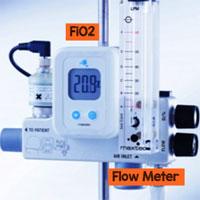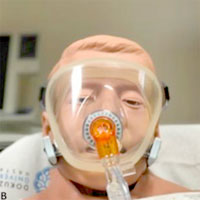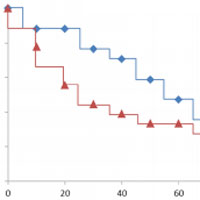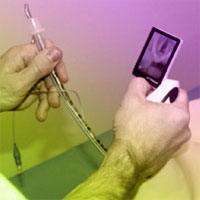Tag: hypoxemia

ECMO for Severe ARDS
Mr. Jackson is a 36-year-old man whom you are caring for in the intensive care unit (ICU). Before this hospitalization, he was healthy and took no medications. He has never smoked, and he drinks three or four beers every... read more

Chest Radiography vs. Lung Ultrasound for Identification of ARDS
For the identification of acute respiratory distress syndrome (ARDS) using the Berlin definition, both chest radiography and lung ultrasound were equally related to mortality. The Berlin definition using lung ultrasound helped... read more

High Flow Nasal Cannula (HFNC) – Part 1: How It Works
The use of heated and humidified high flow nasal cannula (HFNC) has become increasingly popular in the treatment of patients with acute respiratory failure through all age groups. I first started using it as a pediatric intensive... read more

Non-invasive Ventilation in the ED: Whom, When, How?
Timely use of NIV in the ED may decrease the need for invasive ventilation and its associated complications. The appropriate device, interface and patient selection are, therefore, key components of NIV success. Once the... read more

Management and Outcomes of ARDS Patients With and Without Comorbid Conditions
Half the patients with acute respiratory distress syndrome (ARDS) had major comorbidities, which were associated with severe ARDS, multiple organ dysfunction, and day‑28 mortality. These findings do not support the exclusion... read more

Evaluating the Cost-Effectiveness of Proportional-Assist Ventilation Plus vs. Pressure Support Ventilation in the ICU in Two Countries
The published reductions in asynchrony and length of stay in the ICU with proportional assist ventilation (PAV ventilation by Medtronic) led to shorter time on ventilation, and reduced incidence of ventilator-associated pneumonia... read more

The Answer My Friend is Blowin’ in your Nose – High Flow Nasal Oxygen
High flow nasal oxygen is a novel device that actively humidifies and heats air to make flows of up to 60 liters a minutes tolerable. These incredibly high flows are important, because in order to provide 100% fiO2 to patients... read more

Resuscitation Sequence Intubation – Hypoxemia Kills
This blog post is the second part of a series of 3, on a recent lecture I was asked to give on Critical Care Updates: Resuscitation Sequence Intubation. This talk was mostly derived from a podcast by Scott Weingart (Twitter:... read more

ECMO for Severe Middle East Respiratory Syndrome Coronavirus
Extracorporeal membrane oxygenation (ECMO) use, as a rescue therapy, was associated with lower mortality in MERS patients with refractory hypoxemia. The results of this, largest to date, support the use of ECMO as a rescue... read more

Gas Exchange in ARDS
Acute respiratory distress syndrome (ARDS) is characterized by severe impairment of gas exchange. Hypoxemia is mainly due to intrapulmonary shunt, whereas increased alveolar dead space explains the alteration of CO2 clearance.... read more

A multicenter, randomized trial of a checklist for endotracheal intubation of critically ill adults
The verbal performance of a written, pre-procedure checklist does not increase the lowest arterial oxygen saturation or lowest systolic blood pressure during endotracheal intubation of critically ill adults compared to usual... read more

Oxygen Therapy in Suspected Acute Myocardial Infarction
Routine use of supplemental oxygen in patients with suspected myocardial infarction who did not have hypoxemia was not found to reduce 1-year all-cause mortality. A total of 6629 patients were enrolled. The median duration... read more

Video vs direct laryngoscopy in the ICU: are we asking the right question?
Endotracheal intubation in the operating room (OR) and the ICU are different procedures, but this is not always recognized. The ICU patient should be evaluated as a physiologically difficult airway, in contrast to the traditional... read more

Rocketamine vs. Keturonium for Rapid Sequence Intubation
Airway management is a detail-oriented sport. Minor nuances of patient positioning can be essential. Or gentle laryngeal manipulation. Apneic oxygenation can improve first-pass success. Placing the pulse oximeter on the... read more








